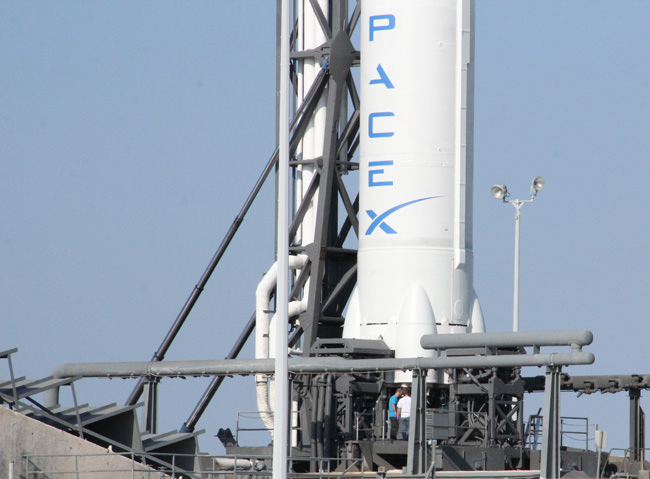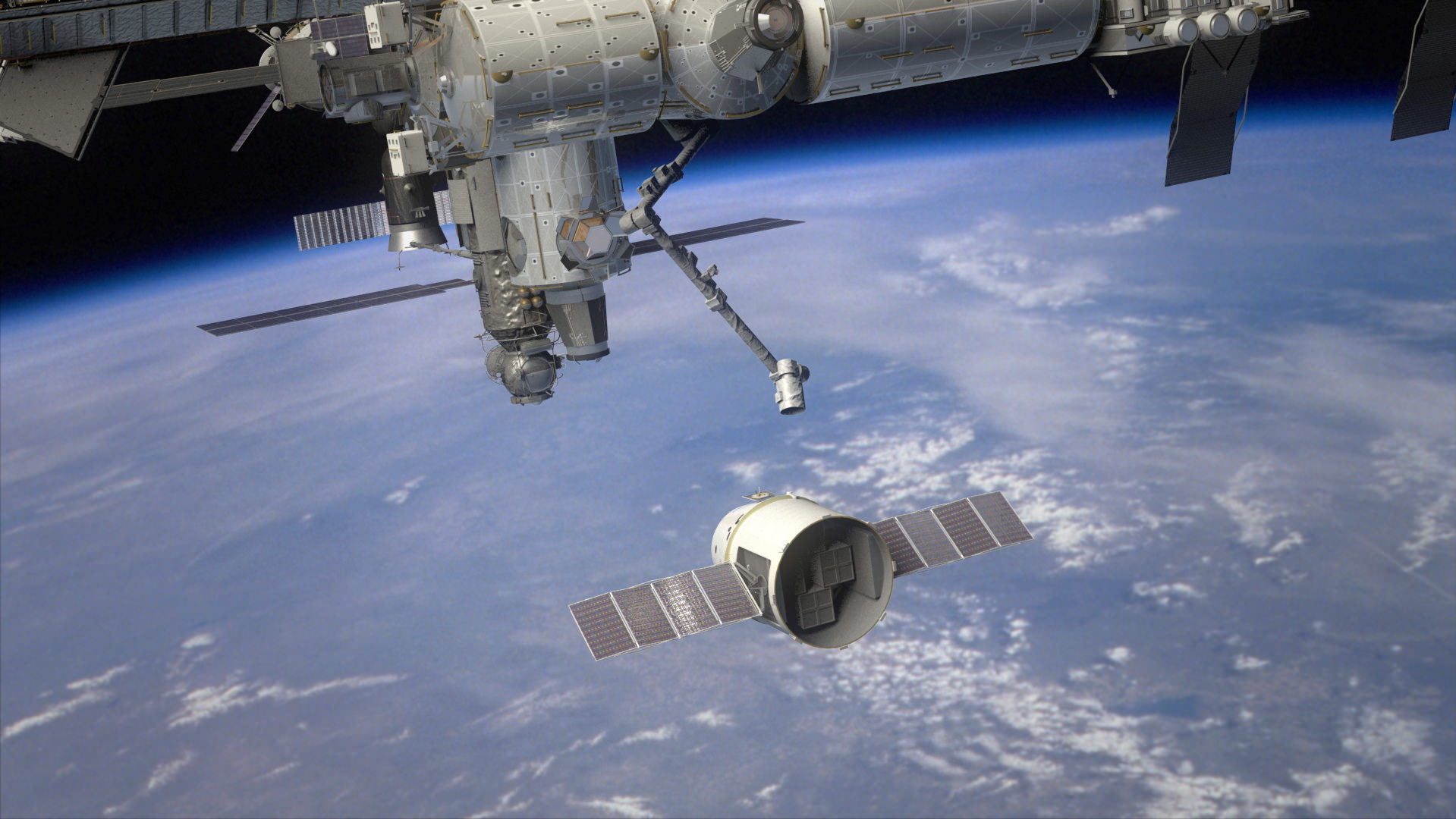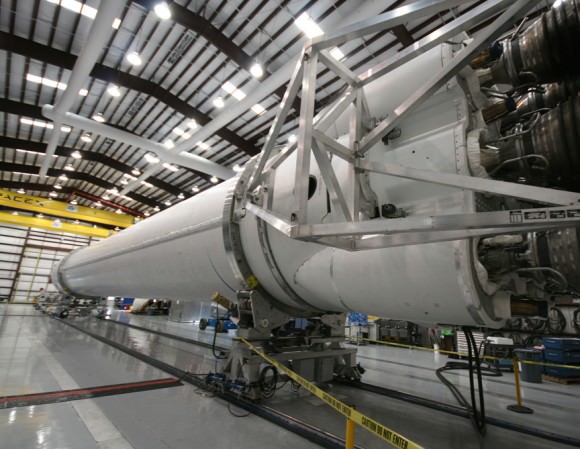[/caption]
Today’s (May 19) historic launch of the first ever privately developed rocket bound for the International Space Station (ISS) was very surprisingly aborted at the last second when an engine glitch forced a dramatic shutdown of the Falcon 9 rockets 1st stage firing already in progress and as the NASA launch commentator was in the middle of announcing liftoff.
SpaceX and NASA are now targeting liftoff of the mission dubbed COTS 2, for Tuesday, May 22 at 3:44 AM EDT from Space Launch Complex-40 on Cape Canaveral Air Force Station in Florida. There is another launch opportunity on May 23.
Later today, SpaceX engineers determined that a faulty valve caused the engine abort failure. They are now in a race against time to complete all the repair work and mandatory assurance testing required in order to be ready to achieve the new May 22 launch date.
The Falcon 9 rocket was designed and developed by SpaceX and the first stage is powered by nine Merlin 1 C engines. As the countdown clock ticked down to T-minus zero, all nine engines ignited. But engine #5 suddenly developed a “high chamber pressure” and computers instantaneously ordered a shutdown of thrust generation by all nine engines just 0.5 seconds from liftoff and the rocket therefore never left the pad, said SpaceX President Gwynne Shotwell at a briefing for reporters.
“We’ve had a cutoff,” announced NASA launch commentator George Diller. “Liftoff did not occur. We’ve had a launch abort. Standing by.”
After draining the explosive propellants, SpaceX engineers began inspecting the engines later today within hours of the aborted liftoff to determine the cause of the rocket engine malfunction.
“This is not a failure,” Shotwell told reporters at a post scrub media briefing. “We aborted with purpose. It would have been a failure if we lifted off with an engine trending in this direction.”
SpaceX may have caught a lucky break by being able to fix the rocket at the pad instead of a time consuming engine changout. Shotwell said that one possibility was to roll the Falcon 9 rocket back into the processing hangar and swap out the engine with a new one.
This evening SpaceX announced they had determined the cause of the engine failure.
“Today’s launch was aborted when the flight computer detected slightly high pressure in the engine 5 combustion chamber, said SpaceX spokeswoman Kirstin Grantham. “We have discovered root cause and repairs are underway.”
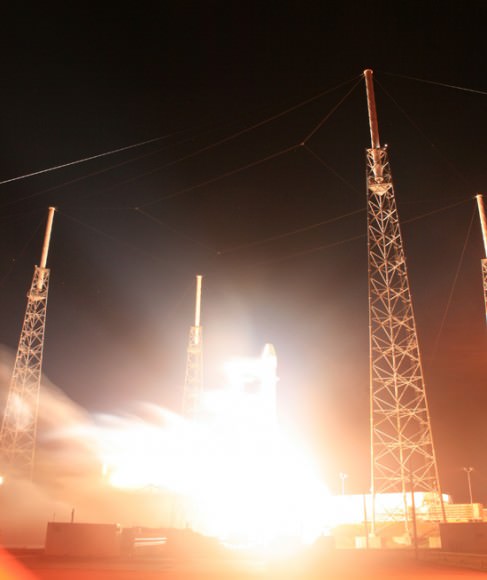
Credit: Ken Kremer/www.kenkremer.com
“During rigorous inspections of the engine, SpaceX engineers discovered a faulty check valve on the Merlin engine. We are now in the process of replacing the failed valve. Those repairs should be complete tonight. We will continue to review data on Sunday. If things look good, we will be ready to attempt to launch on Tuesday, May 22nd at 3:44 AM Eastern.”
The purpose of Dragon is to carry some 1200 pounds of supplies up to orbit and dock at the ISS and partially replace the capabilities of NASA’s now retired space shuttle.
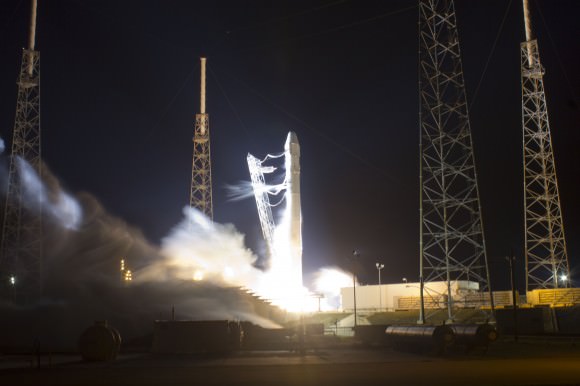
SpaceX is under contract with NASA to conduct twelve resupply missions to carry about 44,000 pounds of cargo to the ISS for a cost of some $1.6 Billion.

